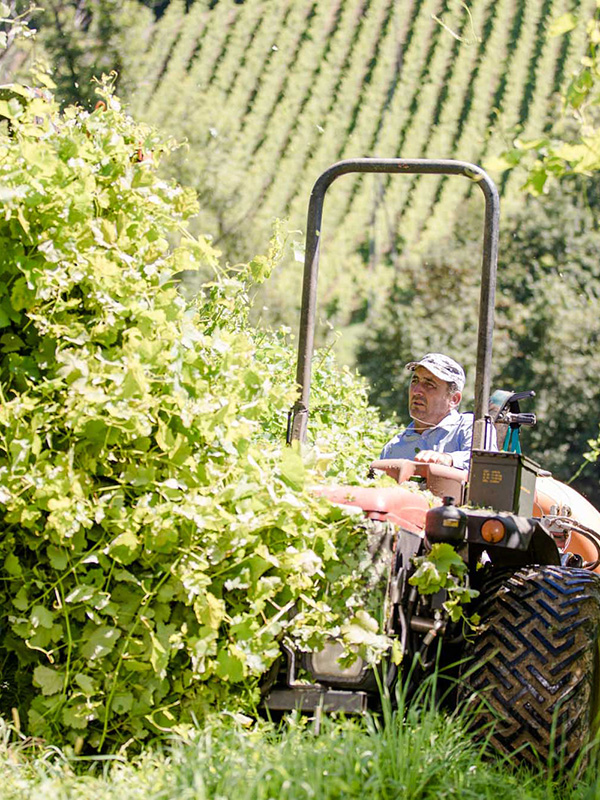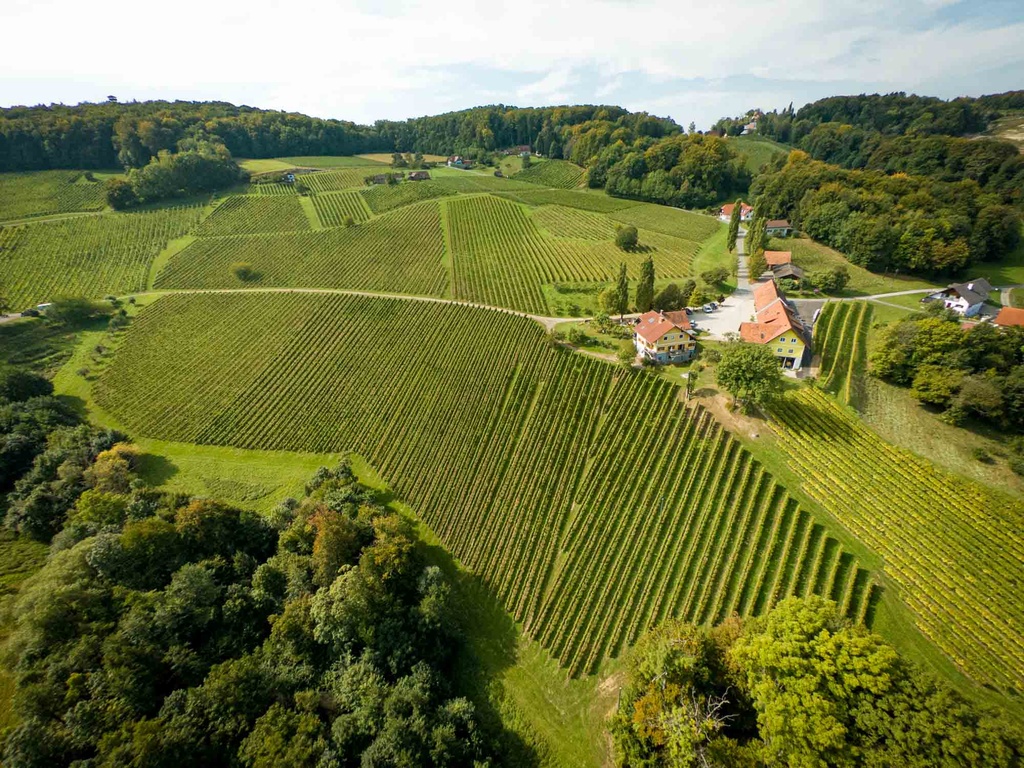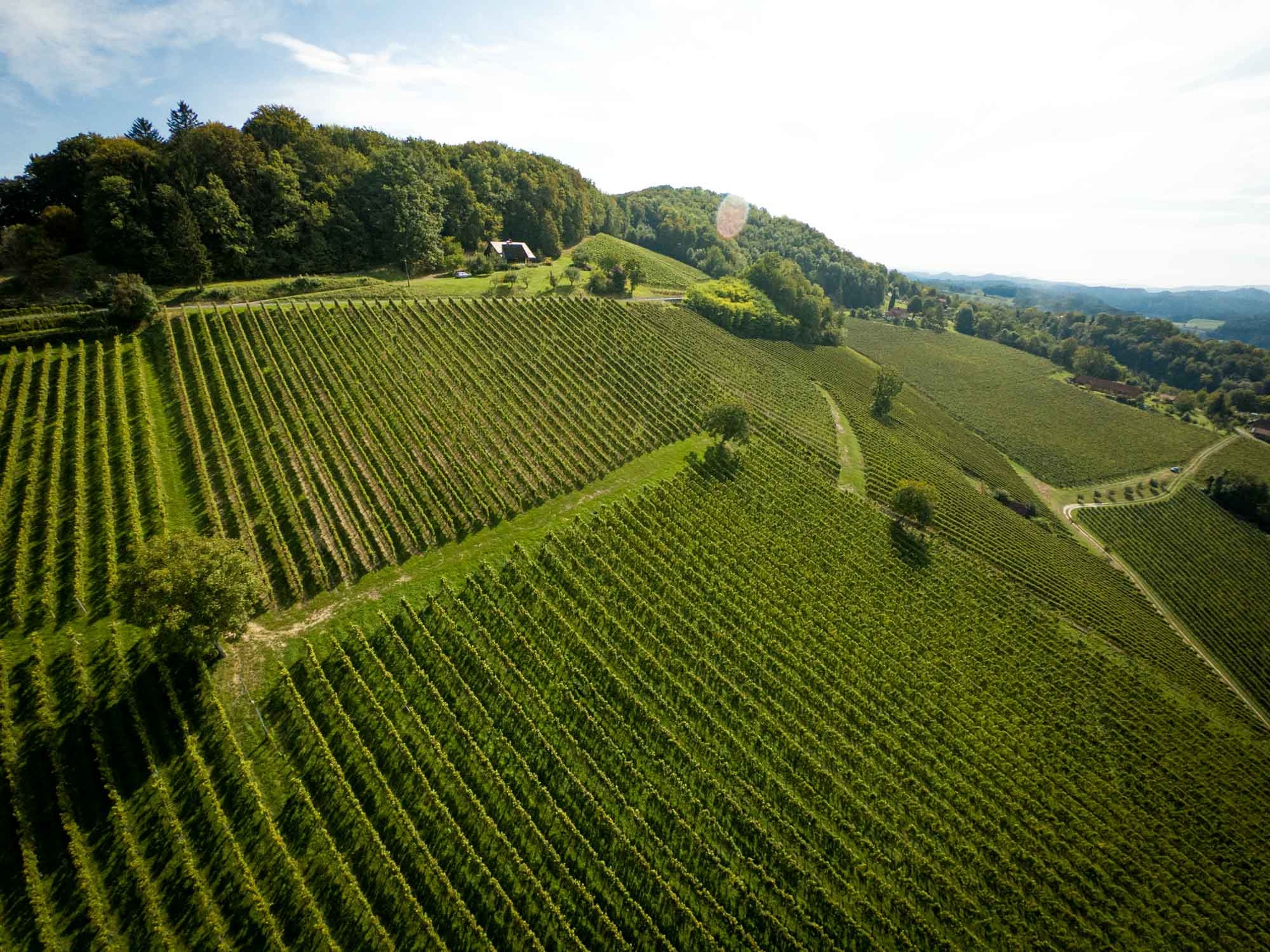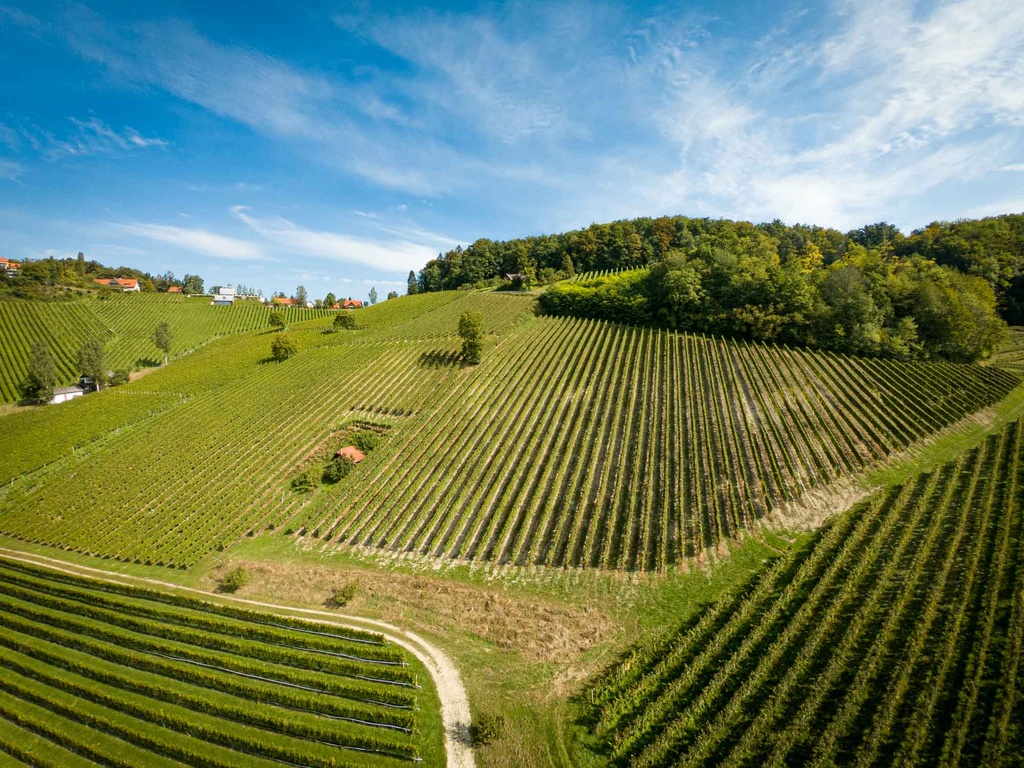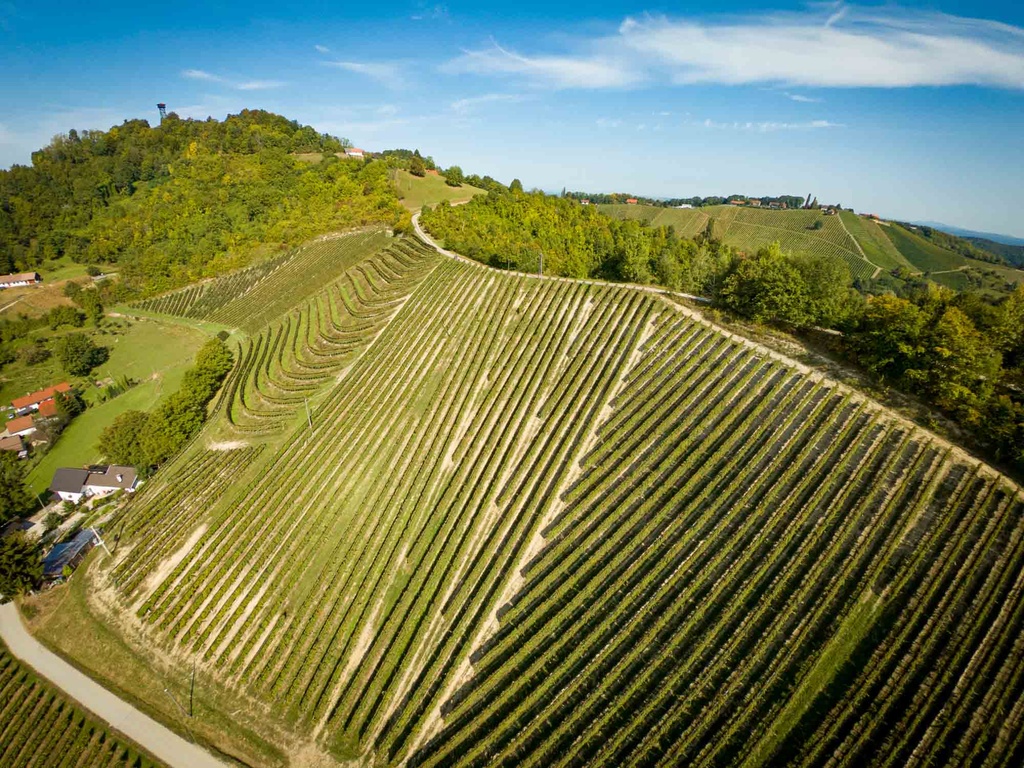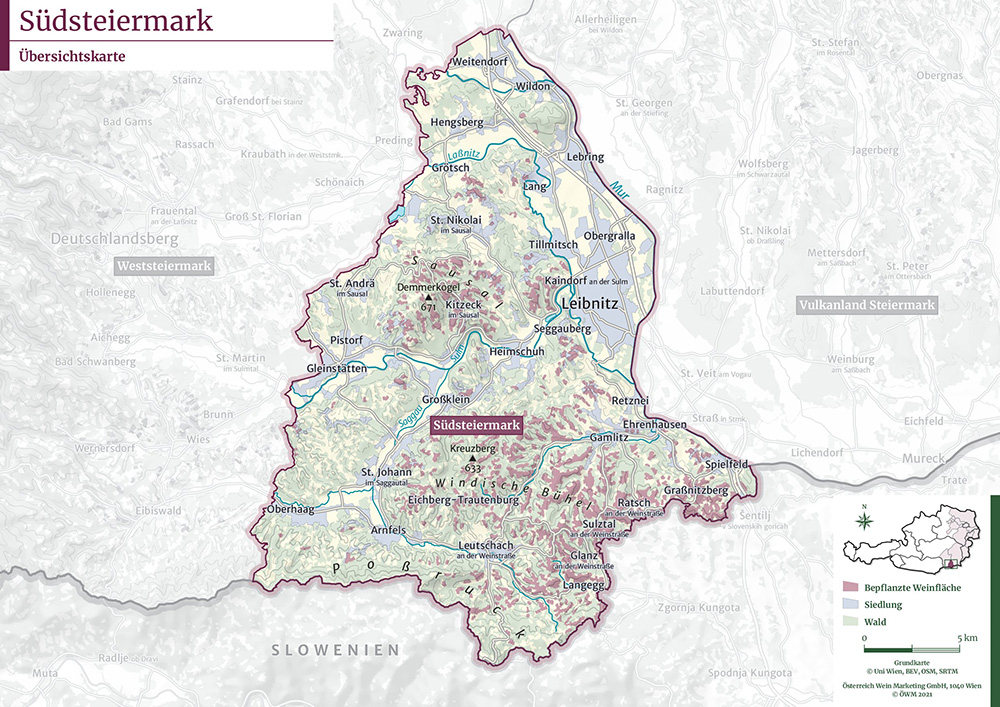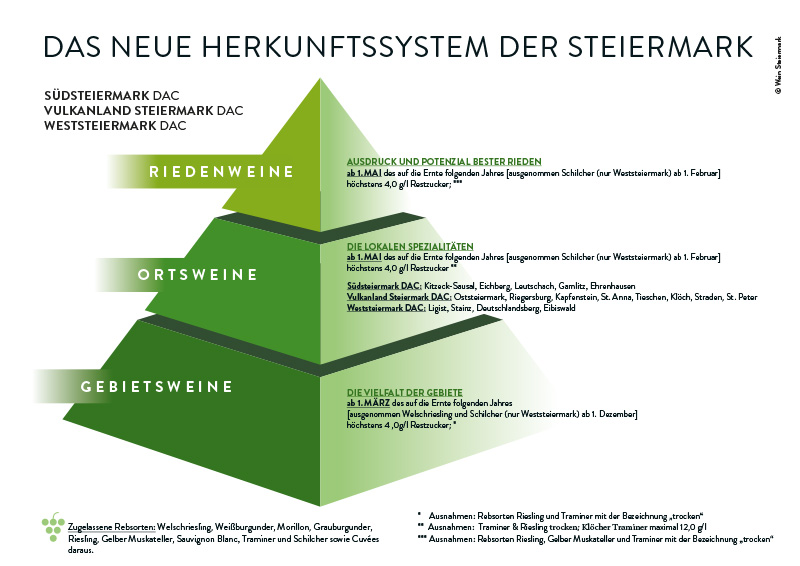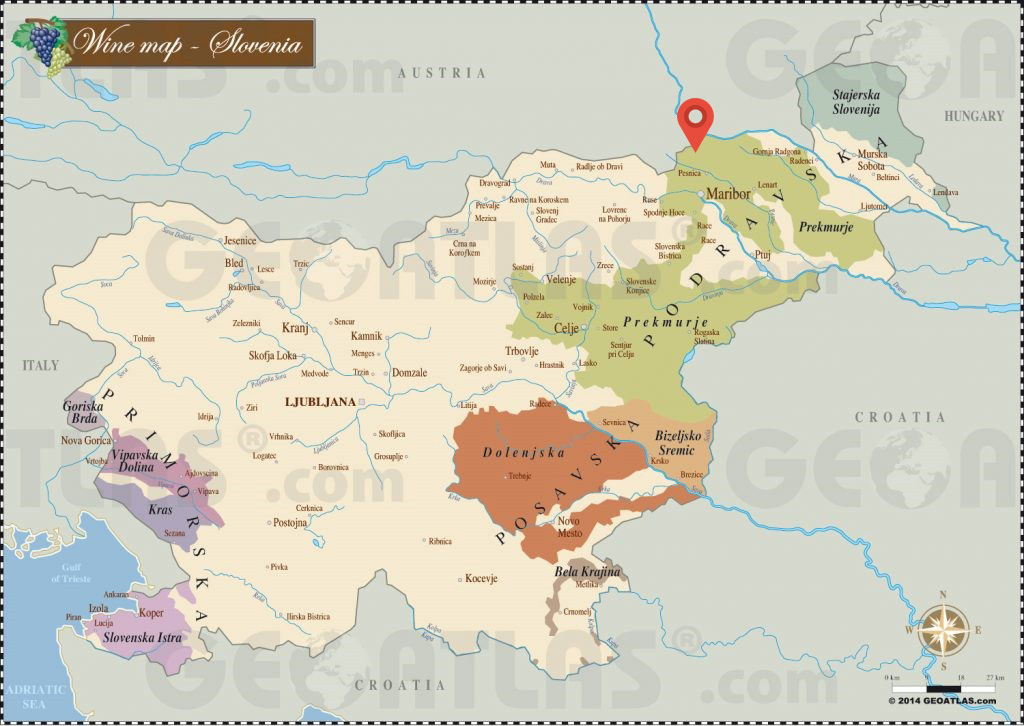



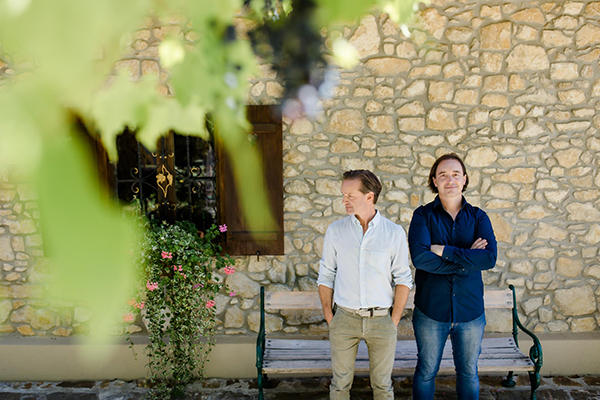

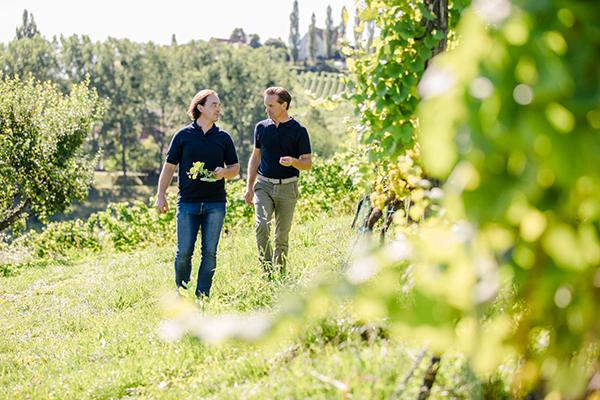
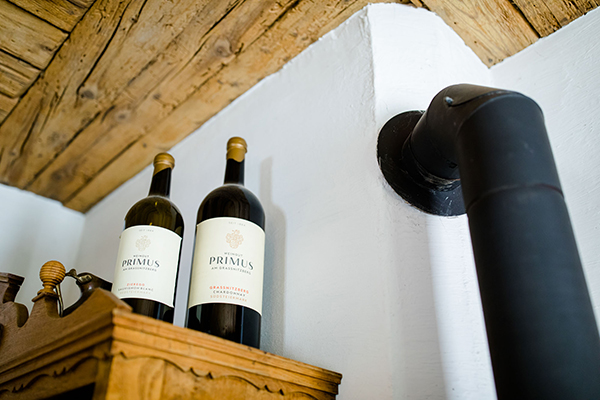
WINERY PRIMUS SINCE 1884
SHELL LIMESTONE IN THE BOTTLE
We pull together, together and hand in hand.
Just like our wines, we ourselves are deeply rooted in our region. We want to transfer this down-to-earth, earthy and artisanal character into our wines.
Multi-layered Sauvignon Blancs, Chardonnays and Gelbe Muskateller from our great vineyards Grassnitzberg and Zieregg on this side and the other side of the border.
Precise, aromatic, mineral and tight!
Since 2023 our winery is Certified Sustainable Austria.
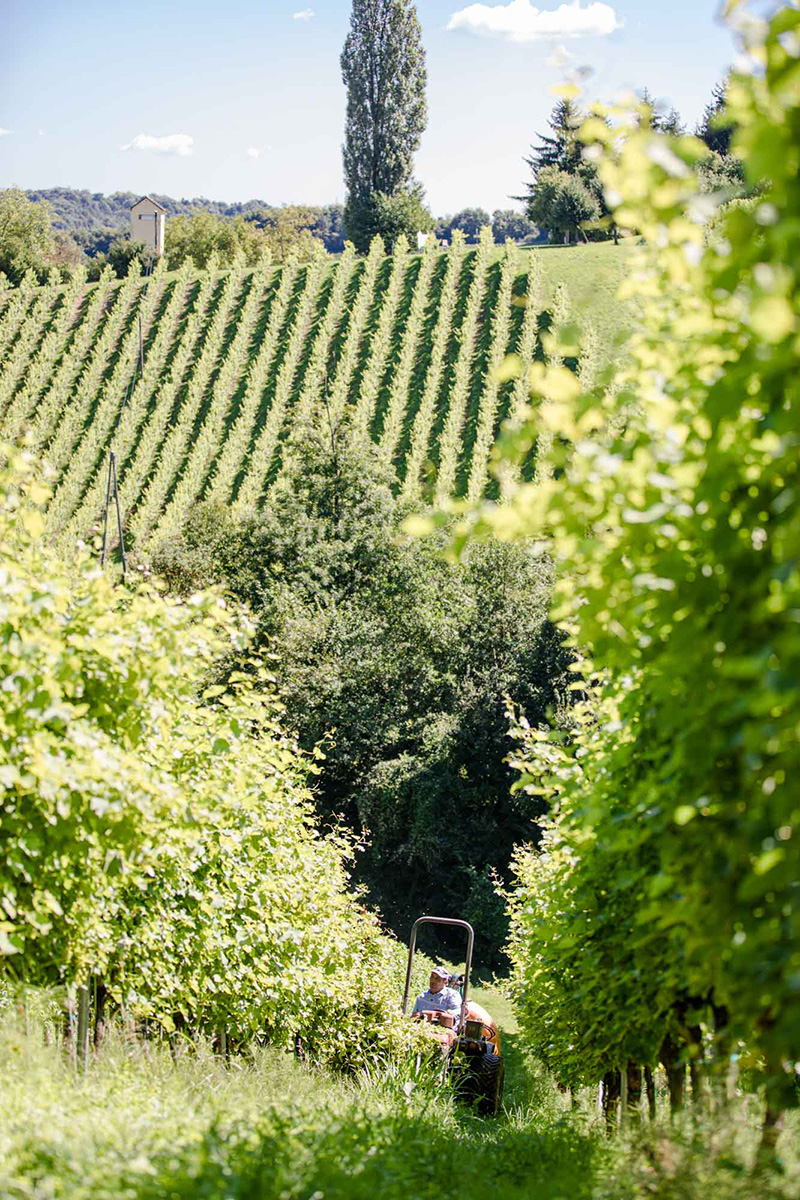
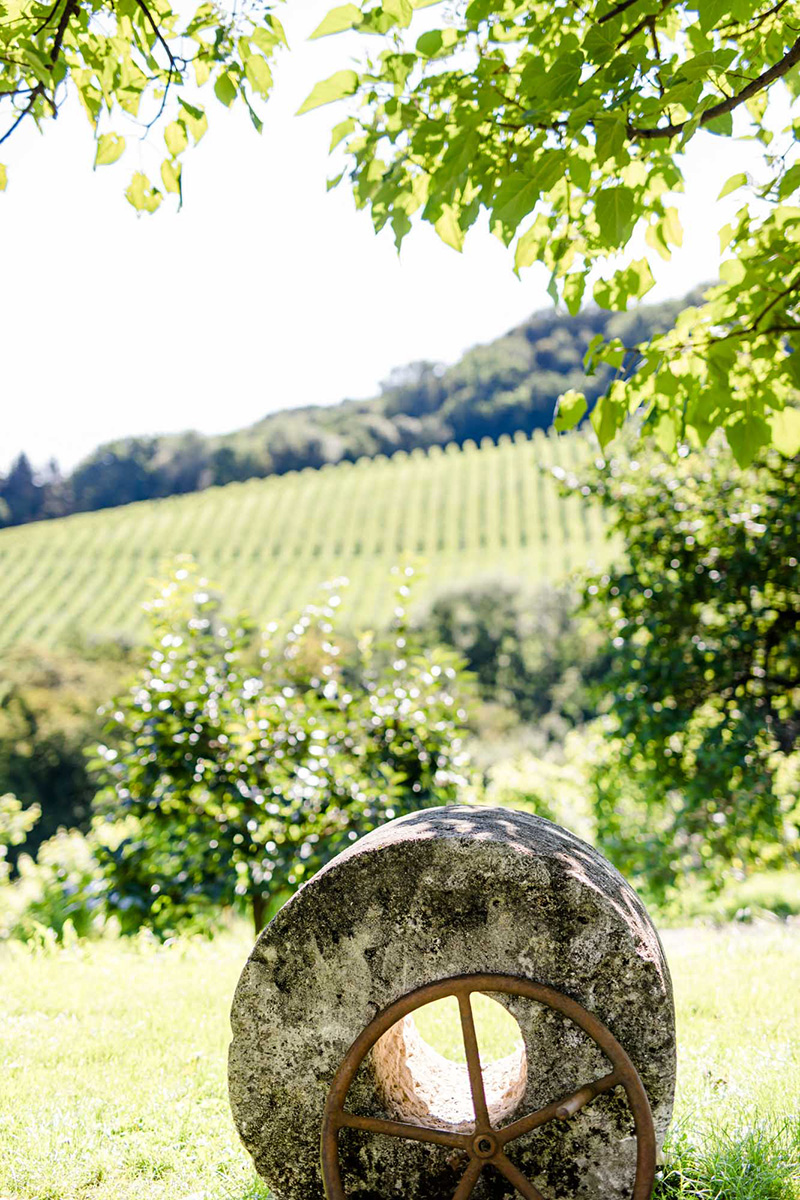
ORIGIN: THE PRIMUS VINEYARDS
All vineyards of our seventeen and a half hectare winery have in common the high lime content. They are distributed in the vineyards Zieregg, Grassnitzberg in the local wine region Ehrenhausen and Zieregg and Hochgrassnitzberg in Slovenia. Limestone and shell limestone predominate on both sides of the border, with the exception of the Slovenian Hochgrassnitzberg Kresnica, where the clay marl Opok sets the tone in parts.
Ried Grassnitzberg
The Grassnitzberg vineyard is characterized by Tertiary marine sands with a shell limestone weathering subsoil with sandy-loamy marine deposits up to 14 million years old, known as „Spielfelder Schlier“. The oldest vines in this vineyard (Traminer) are over eighty years old and rootless.
- Where: on the Grassnitzberg in the municipality of Spielfeld
- Soil: loamy sands (marl) with shell limestone
- Orientation: east-southeast
- Altitude: 420 meters
- Slope: 35 %
- Grape varieties: Sauvignon Blanc, Chardonnay, Yellow Muscat, Traminer, Welschriesling, Pinot Blanc
- Age of the vines: 15 to 80 years (the Ried Sauvignon Blanc and Chardonnay around 30 years, the Traminer 80 years)
- Wines: Ried Grassnitzberg Sauvignon Blanc, Ried Grassnitzberg Chardonnay, Ried Grassnitzberg Gelber Muskateller, Traminer Alte Reben (Reserve), Traminer Grassnitzberg "M" mash fermentation - Orange Wine, Gelber Muskateller Klassik, Zweigelt Klassik, Weißburgunder Klassik, Gelber Muskateller Klassik, Sauvignon Blanc Klassik, Sauvignon Blanc Brut
Ried Zieregg
The Ried Zieregg (Historic Zieregg) is a very high exposed slope of up to 470 meters above sea level. The reed is characterized by medium to deep calcareous and loamy shell limestone & coral reef soils with sufficient water supply and a unique microclimate.
- Where: Municipality of Ehrenhausen (on the border to Spielfeld)
- Soil: sandy loam (marl) with shell and coral limestone
- Orientation: west-southwest
- Altitude: 440 meters
- Slope: 35 to 45 %
- Grape varieties: Sauvignon Blanc, Chardonnay
- Age of the vineyards: the main plot more than 20 years old
- Wines: Ried Zieregg Sauvignon Blanc, Ried Zieregg Chardonnay, "TBA" Trockenbeerenauslese Sauvignon Blanc
Ciringa (Zieregg)
- Where: in the cadastral commune of Ciringa directly on the border next to the Austrian Zieregg
- Soil: sandy loam with shell and coral limestone
- Orientation: southwest
- Altitude: 420 meters
- Slope: 42 %
- Grape varieties: Sauvignon Blanc
- Age of vines: 11 years
- Wines: Sauvignon Blanc Muschelkalk
Kresnica (Hochgrassnitzberg)
- Where: on the hill in front of the Hochgrassnitzberg in the cadastral municipality of Kresnica and close to the border
- Soil: sandy loam, opok and shell limestone
- Orientation: southwest
- Altitude: 420 meters
- Slope: 42 to 53 %
- Grape varieties: Sauvignon Blanc, Yellow Muscat, Chardonnay
- Age of vines: 15 years
- Wines: Apollo Klassik (white cuvée), Sauvignon Blanc "vom Opok".


GRAPE VARIETIES & VARIETALS
The limestone-dominated soils generally bring a lot of character to the wine – the wines develop plenty of nerve and never get too lush. The abundant rainfall in the region is beneficial to the aromatic varieties, and the large temperature differences between day and night also provide a rich bouquet.
Naturally, we place a great deal of focus on the region’s most important grape variety, Sauvignon Blanc. We produce it in various forms, with vineyard designation, as sweet wine and as sparkling wine.
Also important to us is the Chardonnay, called „Morillon“[1] in Styrian. It thrives excellently on the calcareous soils of the region. Its importance should become even greater for the house.
In general, we want to intervene as little as possible – but still support as far as possible to produce elegant wines with character typical of the region.
The range of varieties
Sauvignon Blanc
Yellow Muscat
Pinot Blanc
Welschriesling
Traminer
Morillon (Styrian for Chardonnay)
Zweigelt
[1] probably derived from the old French form „more“ for black
SOUTH STYRIA
Southern Styria“ is the name given to the southern part of the Austrian province of Styria. In the Paris Peace Negotiations of 1919, the region was divided between Austria and Slovenia, and the part lying within the territory of the latter is referred to as „Lower Styria“. Southern Styria is delimited from Central Styria to the north by a line along the towns of Deutschlandsberg, Wildon and Bad Gleichenberg. To the west and east of the Mur River are Southwestern and Southeastern Styria.
About one percent of Austria’s wines come from southern Styria. The vineyards, some of which are very steep – many with a slope of over 26 percent – are scattered in small sections on the region’s picturesque hills and mountains and are very complex to work.
THE SOUTH STYRIAN QUALITY PYRAMID
Since 2018 there is the official Styrian Quality Pyramid, according to whose system we have been working since the year 2000. Internationally introduced and common, it is for us the logical and consistent distinction of our wines.
The southern Styrian climate
The southern part of Styria lies climatically in the area of influence of the Mediterranean in the Illyrian climate zone. This extends from the southern part of Carinthia to the southeast of Austria. High pressure areas (Adriatic highs) coming from the Adriatic Sea ensure, especially in autumn, that the weather here is noticeably milder than in the more northern areas of Central or Upper Styria.
Summers are also warmer in southern Styria than in the other regions, noticeable because Leibnitz, among others, is always the Austrian heat pole. The average temperature in January is around 0 °C and in July around 22 °C. In midsummer, days with over 30 °C become more frequent.
From the point of view of viticulture, this means: Warm and humid Mediterranean climate determines the long course of vegetation, cool nights promote the development of a rich aroma and structure in the wine. Both give richness of nuance and nobility to the regional white wine varieties and the increasingly common red wine varieties.
The climate in numbers:[1]
Average annual temperature of 9.8 °C
monthly sunshine duration of 1,980 hours
Annual precipitation sum of 827 mm
Summer days (max. over 25°C): 95
Tropical days (max. over 30°C): 72
Frost days: 10
[1] Climate data Environmental Office Styria for Bad Radkersburg: umwelt.steiermark.at, accessed in September 2020.
THE SOILS OF SOUTHERN STYRIA
The soils of southern Styria are very diverse, multi-layered and dominated by sand and shale, marl and limestone. Most of the South Styrian vineyards lie on coarse-grained gravels. They were deposited by rivers and are consolidated here and there into conglomerates – such as marl, clayey Schluffe and sands to form the „Styrian Schlier“ in the East Styrian Basin.
Conglomerates, gravels, sands and marls form the „Weissenegg Formation“. It belongs to the sediments of the Styrian Basin deposited in the sea of the Paratethys[1] and is between about eighteen and fifteen million years old. It is very variable in grain size and lime content, often being pure limestone. The Weissenegg formation occurs locally between Wildon and Graßnitzberg, where our vineyards are located.
[1] In Earth history, the Paratethys is a marginal sea of Eurasia that formed between the upfolding alpine mountains and the Eurasian mainland predominantly on continental crust. It extended in the Paleogene and Neogene from the Rhone area to the region of the present Aral Sea. Source: Wikipedia, accessed September 2020.
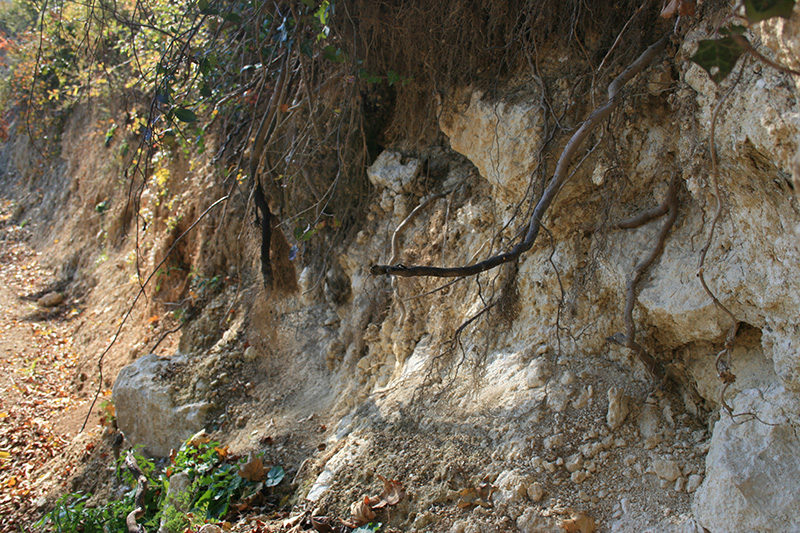
LOWER STYRIA SLOVENIA
Since 2008, we have owned the best vineyards with a total of four hectares of vineyards in the best locations in Slovenia. They are located just over the border, only about 400 meters from the winery on Grassnitzberg as the crow flies: the vineyards „Kresnica“ on the Slovenian Hochgrassnitzberg and „Ciringa“ and „Ziernick“ on Zieregg. We cultivate these areas close to nature according to the guidelines of controlled integrated production or the Slovenian KOPOPP program for ecological agriculture.
The soils of shell limestone and gray lime marl (a mixture of lime and clay, called „Opok“ in Styria) are particularly poor.
The climate is the same as on the Styrian side of the border.
THE BROTHERS CHRISTIAN & THOMAS POLZ
Actually, everything was planned quite differently. We were in training, wanted to get to know the world and travel. The early death of our father brought us unexpectedly back home to the winery. The fact that we wanted to run it together did not require any thought – even though we still lacked any practical experience with winemaking. Learning by doing was the order of the day. Today, the direction is right, and a permanent readjustment accompanies us in our constant striving for even better quality. We make decisions together, we have clearly structured and allocated the areas of responsibility.
Since 1998 we have been managing the now seventeen and a half hectare winery in Graßnitzberg in southern Styria. At the age of eighteen and twenty-three, we had to take over the winery by a twist of fate. The competencies were clearly distributed from the beginning: Christian, as cellar master, takes care of the development of the wines, Thomas, as master vintner, is responsible for the vineyards and marketing. Many tasks intertwine, and that’s a good thing. Especially when it comes to vinification, we work hand in hand. We would like to maintain the current size of the winery in order to remain true to the craftsmanship. We are therefore no longer striving for further growth.
The house was not given its present name until 1985, when it was converted to a winery with three hectares of vineyards and an associated wine trade. Martha and Primus Polz – the owners at the time and our parents – acquired another nine and a half hectares of vineyards in the region and four more in the wine-growing area called „Lower Styria“ in nearby Slovenia in the following years. The reasons for this acquisition were the excellent location, the optimal orientation of the vineyards and the geographical proximity. The best argument, however, was the shell limestone and Opok soils (gray limestone marl – a mixture of lime and clay) that predominate there. They offer excellent characteristics for great wines and are located on the Slovenian side of the Hochgrassnitz mountain, called „Kresnica“ and on that of the Zieregg, „Ciringa“.
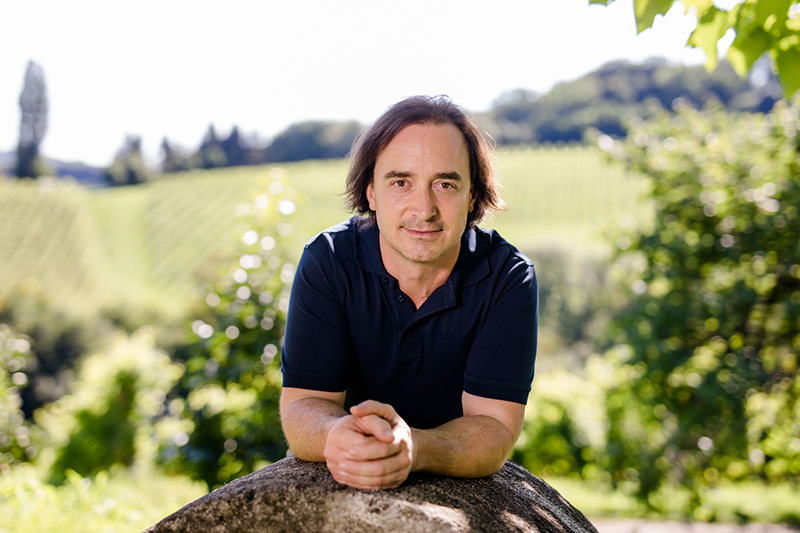
Primus-Christian Polz
Cellar Master
„I want to produce fine wines with character and longevity. They should transport their origin and our special
southern Styrian limestone soils.“
Christian Polz was born in 1979 and graduated from the viticultural school in Klosterneuburg. After his Matura, he was drawn to South Africa for an internship at Rust en Vrede Winery. Back at the winery, at the age of 19, he took on the task of cellar master and very quickly had to fill this role in order to ensure the economic success of the business. Support came above all from the family.
In the cellar, he places particular emphasis on bringing the soils to life in the wine. This requires as little intervention as possible and more careful guidance than deliberate shaping in a desired (taste) direction. Maturation is another important factor in the cellar. Even wines that are fresh and young to drink should be allowed to rest before they are put on sale. Even before the introduction of the Styrian quality pyramid, Riedenweine were only brought to market in the fall of the year following the harvest.
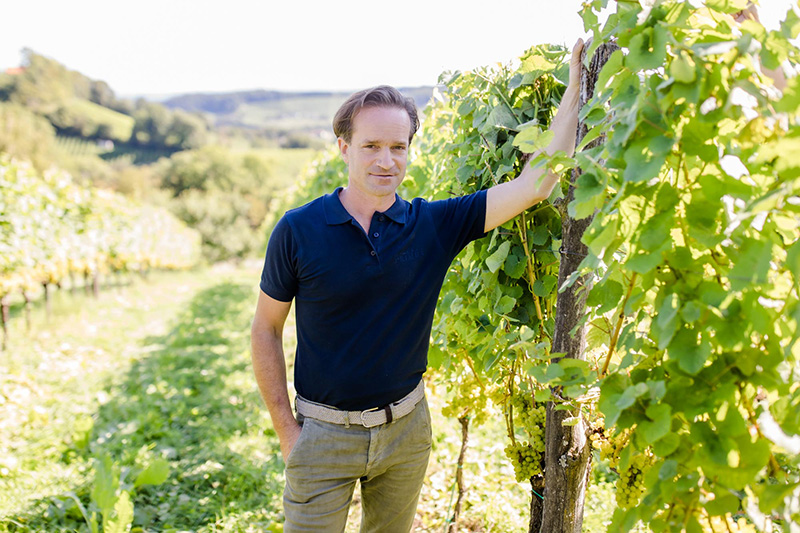
Primus-Thomas Polz
Winemaster
„Then, when grape variety, soil and handwriting are recognizable, the wine is authentic. My goal is this authenticity, this recognizability. This 'typically Primus!.“
Due to the early death of his father, Thomas Polz had to enter the business in 1998 directly after graduating from the commercial academy in Graz. The early entry into viticulture had not originally been his goal, but life does not always take individual wishes into account. After several years of self-taught work, he decided to train as a master winemaker at the Silberberg School of Viticulture, Styria, which he completed in 2003. Equipped with sound knowledge and, in the meantime, a lot of practical experience, he was finally able to dedicate himself to wine the way he wanted to. In addition to viticulture, Thomas Polz is mainly responsible for sales. In the vineyard he attaches great importance to careful and natural handling of the vines. Year-round planting between the rows of vines, avoidance of herbicides and pesticides, and manual cultivation throughout the year have therefore become the norm in recent years. Thomas Polz also pays attention to high biodiversity, which is why there are beehives and insect hotels in the vineyards and fruit and nut trees are planted along the edges of the vineyards. For physiologically ripe grapes are harvested in several harvesting passes and meticulously selected.es,

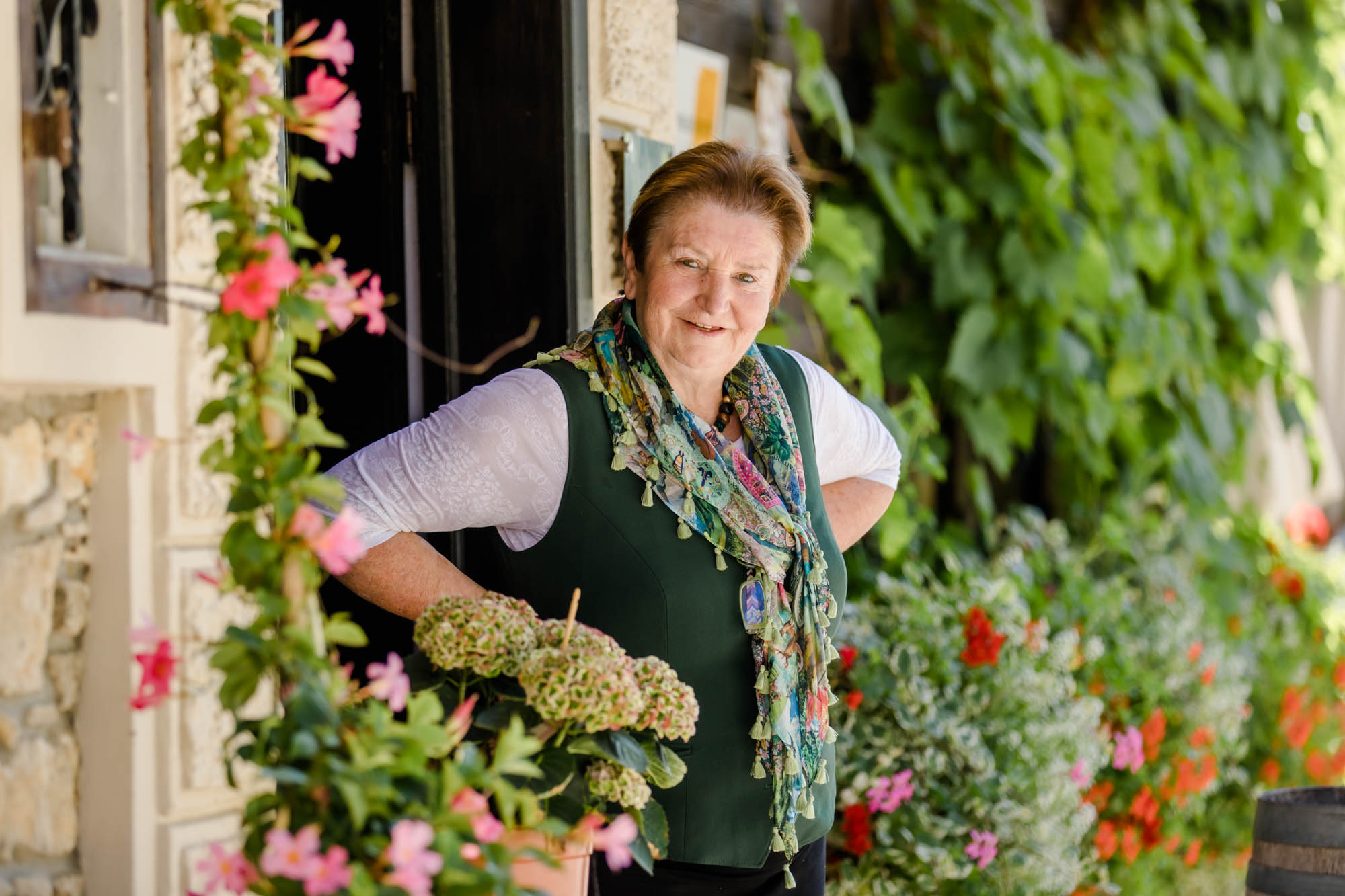
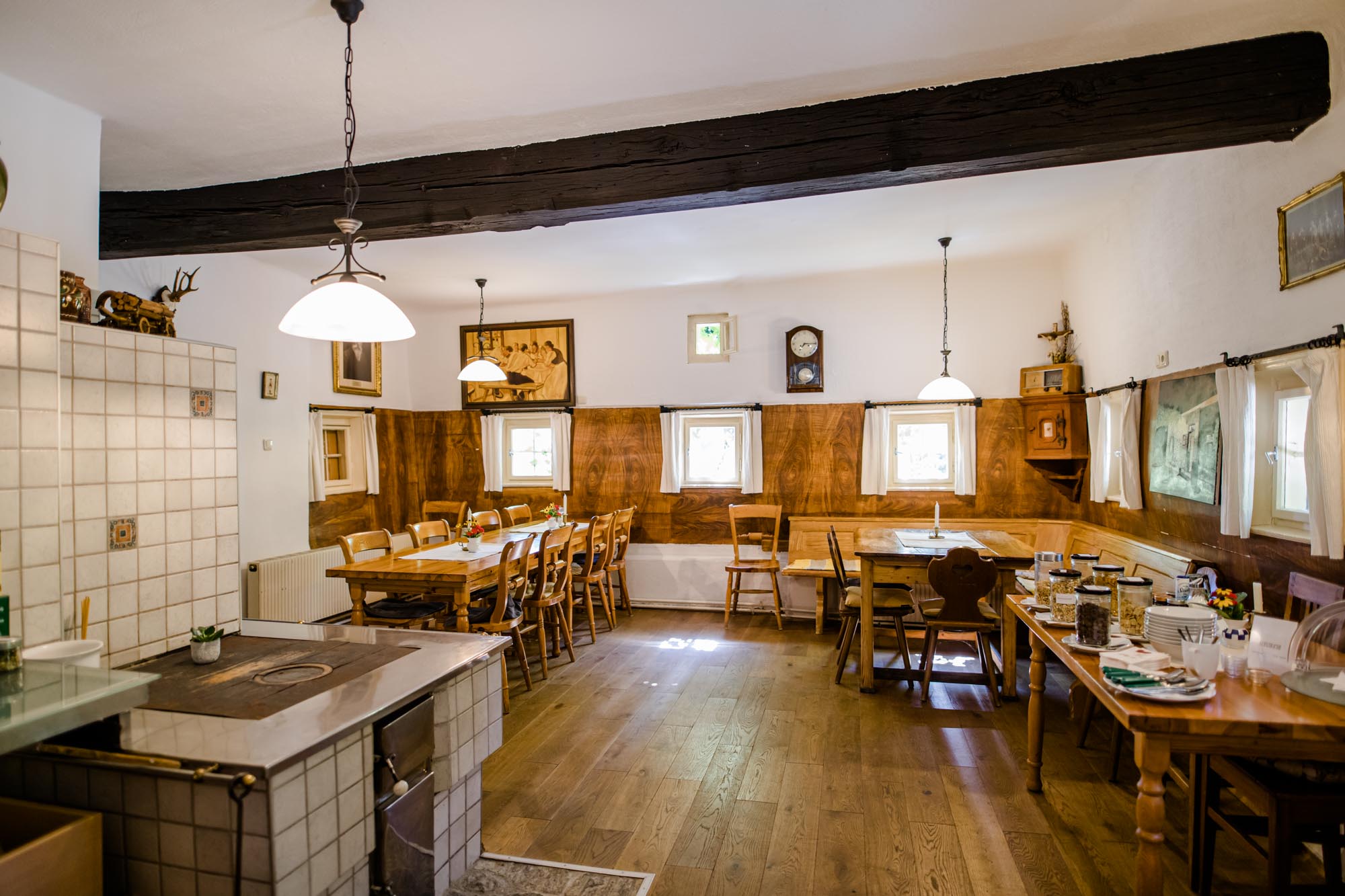
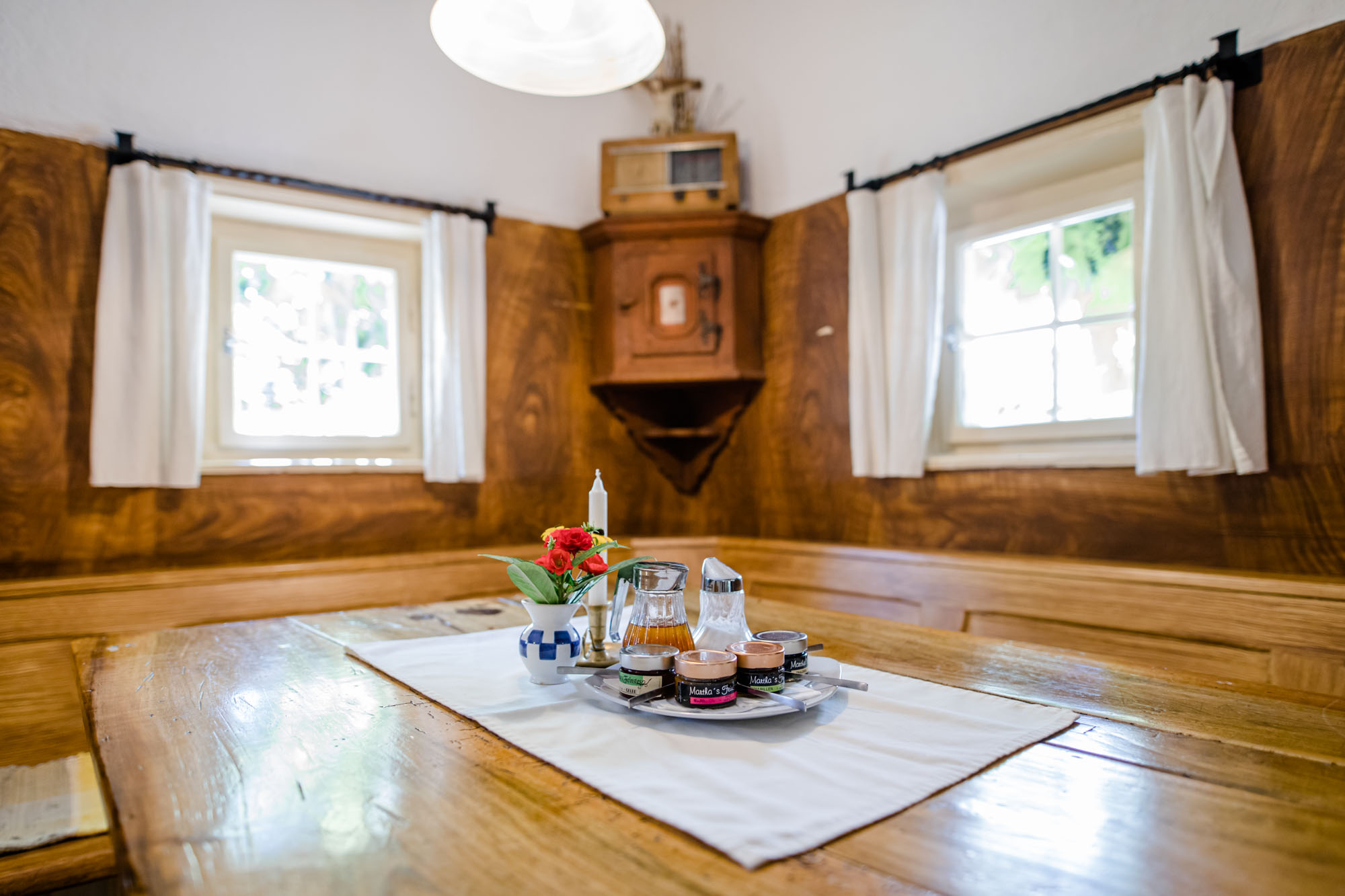
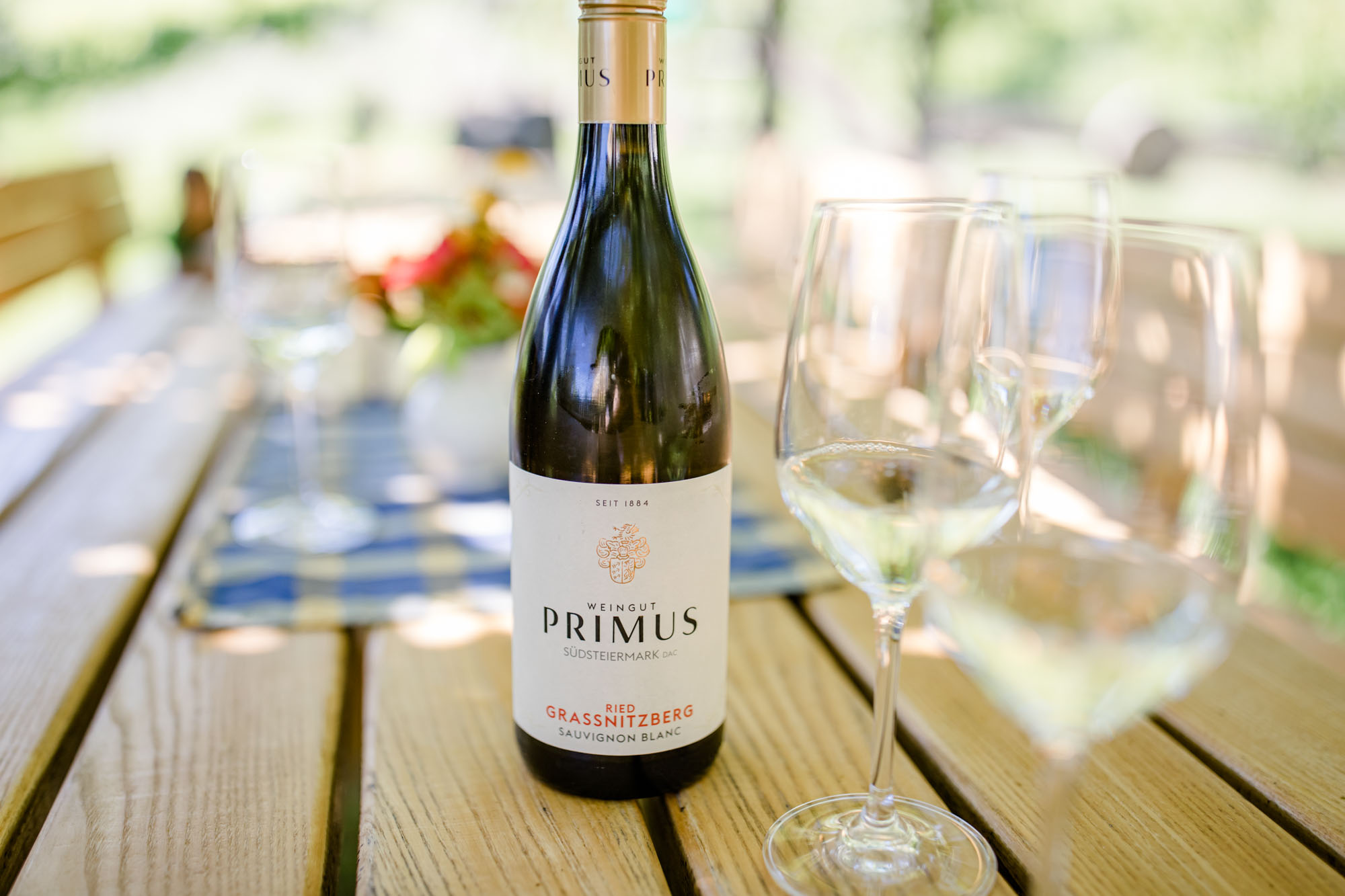
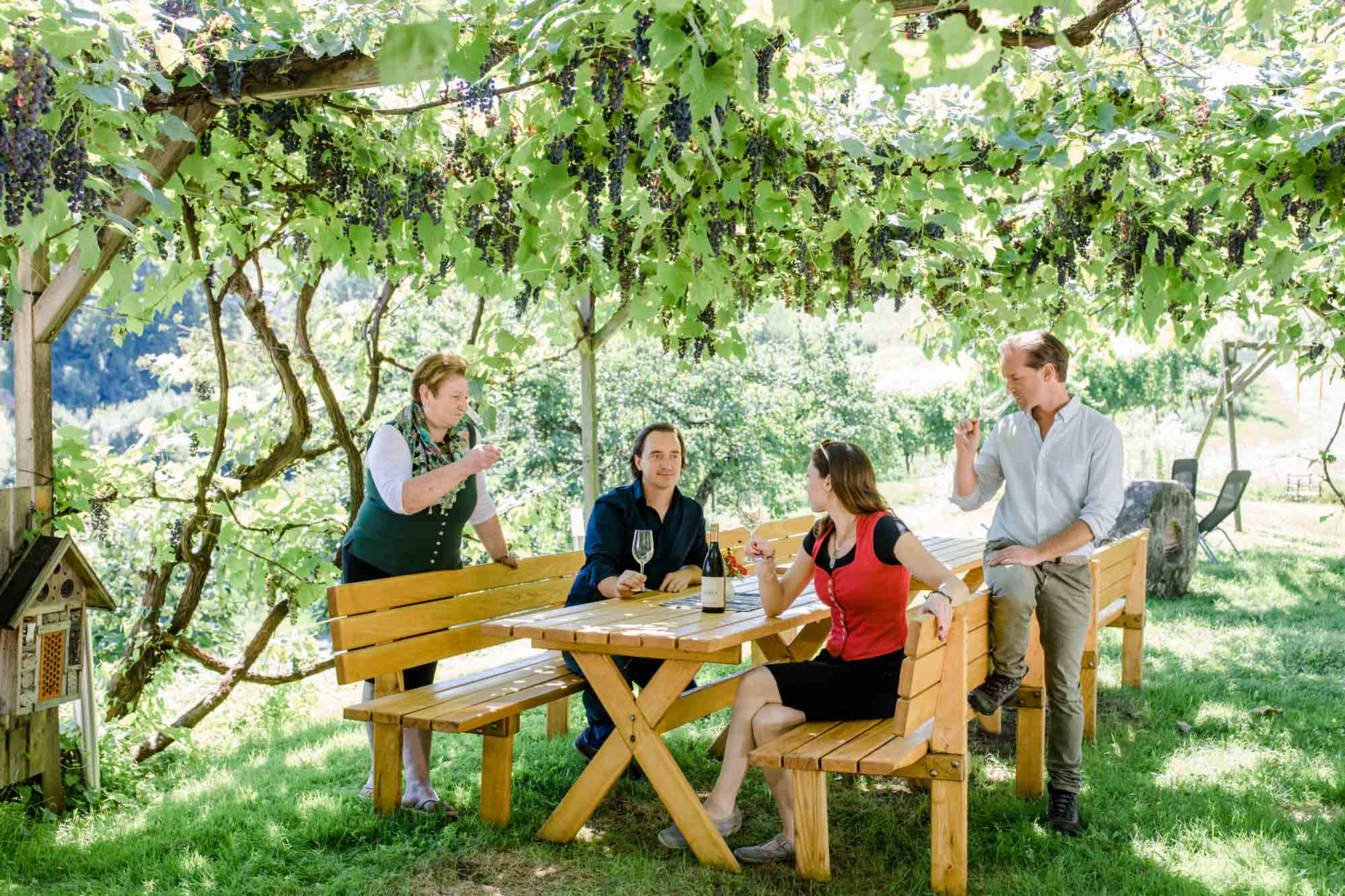
Wine tavern / Buschenschank
WINE TAVERN / BUSCHENSCHANK
The Buschenschank is open for groups of six people or more by appointment!
The premises can also be rented for celebrations. You are welcome to bring a caterer for hot meals.
The Buschenschank is closed on Sundays and reservations are also not possible.
Wine sales daily from 2 pm.
Enthusiastic hosts. A 450-year-old house on the winery grounds was adapted for the Buschenschank by the parents Primus and Martha Polz. It is still run today by our mother Matha Polz and our sister Elisabeth Polz and is only open for groups by appointment. Martha and Elisabeth also take care of the catering for our house guests.
Space. The beautiful rooms on the ground floor breathe the old walls and offer a unique atmosphere with an antique tiled table stove. There is room for about 30 people in the parlors and 40 on the terrace.
Regional delicacies. On the menu are simple typical and seasonal Buschenschank dishes. Apart from a few products such as cheese, all ingredients come from small producers in the region. All dishes are handmade and come cold on the plate – as required by the Buschenschank law. Sausages and hams are complemented by fine vegetarian dishes and salads. Martha Polz’s vegetable and beef terrines are particularly popular with guests and are never allowed to run out. The house’s seasonal pastries and tarts help establish the reputation of this gem.
A BRIEF HISTORY
„Since 1884“ can be read at the top of the winery’s labels. Anton Polz, our great-great-grandfather, acquired in that year the mixed agricultural business, which was common at that time. For many years, wine was only one of several pillars of the business, along with cattle breeding and agriculture; another was a department store in the middle of town. In 1931, Anton Polz skipped direct succession and passed the farm on to his grandson Johann Polz, who continued it as a mixed farm. Anton Polz’s son, Johann Polz Sr., had married a neighboring winemaker in his second marriage and founded the Polz Winery with their son Reinhold.
The winery founders. In 1985 Primus Polz, the son of Johann Polz Jr. and our father, took over the farm together with his wife Martha Polz. He had graduated from the viticultural school in Silberberg and decided to become a winegrower. Part of the agricultural land was one hectare of vineyard, and he planted out two more. Our parents converted to a pure viticulture business and named it „Weingut PrimusPolz„. At the same time they established a wine trade and built a Buschenschank with guest rooms in a 450 year old house at the winery. Primus Polz passed away in 1998.
In 1998 we – Primus-Christian and Primus-Thomas – took over the winery while still very young, renamed it Weingut Primus and over the years made it one of the leading wineries in southern Styria. The wines from the Slovenian sites continue to be marketed under the PrimusPolz label.
Culinary gem. The management of the Buschenschank is still in the hands of our mother Martha Polz, innkeeper and hostess with passion. This enthusiasm is shared by our sister Elisabeth Polz, which is why she returned home after completing her apprenticeship as a commercial clerk and joined the Buschenschank business.

